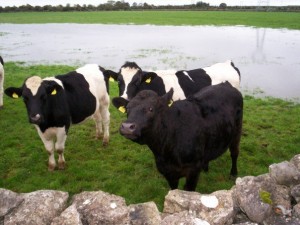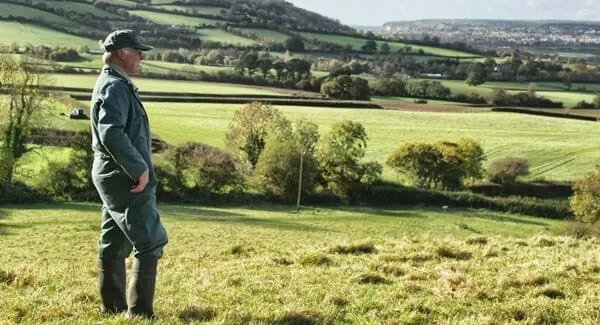With the staunch resolve of the Agricultural Commission to remove all quotas by 2015, Ireland and the EU is heading towards a milk pricing structure that will likely bring new complications and possible hazards to small dairy farmers. Deciding it will make for more efficient price determination, the EU is leaving behind its investment in the idea of multifunctionality, a fairly unique concept among other economic communities. With decoupled payments and a funded REPS scheme, Irish dairy farmers were rewarded for the social capital they provided to the country, including rural development and protecting land from urbanisation. With a move towards market-based pricing, however, not only are these values lost, but observation of other economic countries with similar farmgate structures suggest that the new milk pricing for Irish farmers may ultimately be detrimental.

Easy and satisfying answers to the pricing of milk have never been achieved. The nature of the product itself adds complication. As a flow product, it must be produced and sold daily, regardless of supply, pricing, or expected returns. It is difficult to store dairy products over a long period of time due to its perishability, and as a result it is hard to balance supply and demand artificially. Milk pricing structures in many economic communities are less than a decade old, as different schemes are constantly found inefficient. Israel whose farms are mostly communally operated, is the only country that appears satisfied with its pricing system, largely avoiding a fallout in their dairy industry.
Market-driven milk pricing systems, in the most general terms, have never found a way to manage the volatility of farmgate prices, nor successfully address the disadvantages of small farmers. The market itself is an oligipsony, meaning that many farmers sell to relatively few processors and retailers. Their concentration downstream in the chain grants them the lion’s share of the power, which they have historically abused, both in the EU and abroad. The retail industry has recently been guilty of a lack of transparency in product pricing, maintaining similar mark-ups while farmgate prices halved. Multinationals in various countries have engaged in price-influencing measures, from dumping goods to purchasing government intervention products at a discount and reintroducing them to the market. In 2005, the Competition Commission cited a case of price fixing against seven of the largest dairy companies. The processors were guilty of exchanging sensitive information to co-ordinate pricing of raw milk. With the absence of supply management or watchful government regulation, there is a danger of these practices occurring more frequently.
The best indication of the future for Irish dairy farmers is to consider small farmers in other market-oriented milk pricing structures. On July 1st, 2000, after deciding that the world market would be a more efficient method of determining farmgate prices, Australia became a deregulated dairy industry. The damage was catastrophic, and perhaps one of the biggest non-climate related devastations ever faced by farmers. Once Victoria was no longer restricted, the most concentrated area of dairy farms, its milk moved into other states and collapsed the vitality of farming in whole regions. In 12 months over 30% of dairy farms sold out, and some regions lost over half of their farmers. Those that did survive were forced to expand, typically by 25% or more.
Although the United States dairy industry is viewed by other countries as highly subsidized, it has long upheld political and economic conditions that have forced small farms to sell out in rapid numbers, causing some economists to suggest that there may be very few herds under 150 cows in as soon as ten years. As policy makers push towards economies of scale the structure of rural America has changed. Open space has disappeared, rural communities have become poorer, and examples of environmental setbacks have increased. It is widely accepted that the disappearance of “agriculture in the middle” is too late to reverse. As it stands now, Irish farmers face a similar market-based scheme that could lead to potential difficulties, if not provided with adequate support.
Ireland enjoys a relationship between its farmers and its public that has been lost in most countries many years ago. News coverage on agricultural issues is frequent and accurate, and television programmes such as “Higher Ground” prove a continuing interest in the country’s rural development. In the United States, most people will soon be four generations removed from a farm, and few consumers understand neither where their food comes from nor the people who make it. Although dairy farming makes up over 25% of Ireland’s agricultural output, it is already the sector losing farms the quickest.
Survival in the new EU market is likely to come down to economies of scale and the ability of Irish farms to expand. Ireland has always depended on most of its dairy products leaving the island. Without supply management, farmers will be competing more directly with larger herds, particularly in Cyprus, Slovakia, and the Czech Republic. Statistics suggest that Irish production has the ability to increase by 20%, and that it will likely do so. Other nations are also predicted to boost supply, including Denmark, Sweden, Germany and parts of France, as suggested by higher quota prices in those areas. Poland and Hungary are also likely to make more milk, as they undergo structural changes in their agriculture.
The Mid Term Review by the Commission predicted the milk price to average between 21-29 cents/litre under the new scheme, leaving margin profits slim and putting the competitiveness of Irish agriculture on the line. Due to the low input requirements of rotational grazing, it would appear that Irish farms have an advantage in the open market, and indeed when cash costs alone are considered only Italy produces milk cheaper. However, when calculating total costs, which include owning and renting land, this apparent advantage flounders. Only Germany pays more to make milk. This problem isn’t unique to dairying in Ireland, as all sectors except cereal production loses significant competitive value due to land expenses. The most worrying aspect is that many farms may experience the allocation of land as the biggest hurdle to expansion. How Ireland addresses this problem, as well as how other countries manage their costs, will decide Ireland’s place in the market-orientated pricing structure. If other countries in the EU, almost all of whom produce more kilograms solids per cow, can obtain feed cheaper and reduce other input costs, Ireland may find itself at a further disadvantage.
Irish farmers must find a way to achieve agency quickly in the milk pricing system they will soon be under. The Commission is hoping for a “soft landing” into the market oriented structure, but significant measures must be taken to avoid events similar to the Australian disaster. The commission called for diligence in pursuing price transparency among the actors in the dairy chain and marked the importance of a fair market operation, but so far little or few mechanisms have been created to ensure this. It will be important to see how Ireland’s rather unique brand of partly privatised cooperatives responds to the new milk pricing scheme. In the Dairy Market Situation 2009 report, Member States are allowed and encouraged to provide financial support for the creation of producer organisations, both at the community and national level, to increase farmers’ power “vis-à-vis processors and retailers.” It is not unrealistic to suggest that the vitality of Irish dairy farming in the future may come down to the effectiveness of their cooperatives and cooperative-like associations that fight for their place in the new market.

